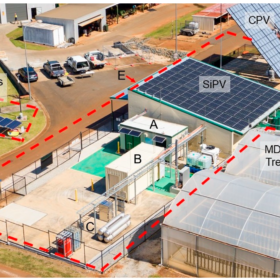Queensland University's Green Hydrogen Production Pilot Plant Using Solar Energy and Microgrid
Key Ideas
- The Queensland University of Technology's H2Xport Pilot Plant uses solar energy, battery storage, and a microgrid to produce hydrogen from non-drinkable water like seawater.
- The pilot plant includes various solar technologies, battery technologies, electrolyser technologies, hydrogen storage, and a fuel cell for regenerative renewable power.
- The project demonstrates the viability of green hydrogen as a renewable energy source and aims to inspire clean tech startups and industry leaders to explore green hydrogen further.
- Fully operational since December 2024, the plant received financial support from the Australian Renewable Energy Agency (ARENA) and offers hands-on training to researchers, engineers, and technicians.
The Queensland University of Technology (QUT) has unveiled the findings from its H2Xport Pilot Plant (HPP), a green hydrogen production pilot plant that utilizes solar energy, battery storage, and a microgrid to produce hydrogen from non-drinkable water sources, including seawater. Located at the QUT Redlands Research Facility near Brisbane, the pilot plant's initial research results have been published in the Energy Storage and Applications journal. The plant incorporates a combination of solar technologies, battery technologies, electrolyser technologies, hydrogen storage, and a fuel cell for regenerative renewable power.
The project, which received funding from the Australian Renewable Energy Agency (ARENA), has successfully demonstrated the feasibility of green hydrogen as a renewable energy source. The plant also includes a portable hydrogen refueling station for hydrogen cars and buses. The plant was fully operational by December 2024 and serves as a practical testbed that bridges the gap between innovative concepts and practical deployment.
The HPP aims to inspire clean tech startups and industry leaders to explore the potential of green hydrogen further. With a focus on collaboration between industry and academia, the plant not only produces green hydrogen but also offers training opportunities for researchers, engineers, and technicians. Advanced battery energy storage is a key component of the project, with various battery companies leveraging the plant's capabilities to accelerate their product development cycles. Overall, the H2Xport Pilot Plant stands as a significant development in system-level hydrogen research and development, highlighting the potential of green hydrogen in the renewable energy sector.
